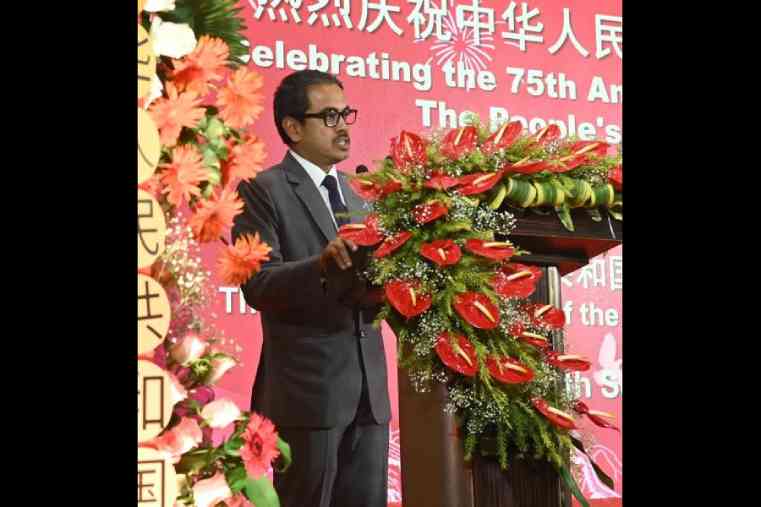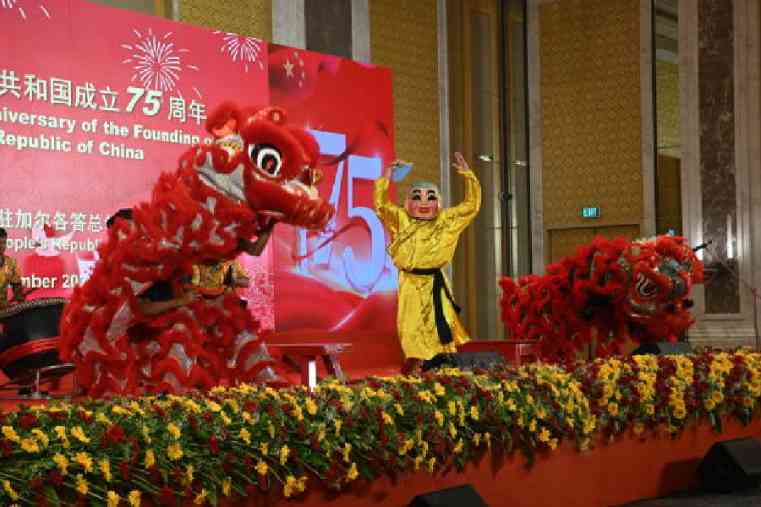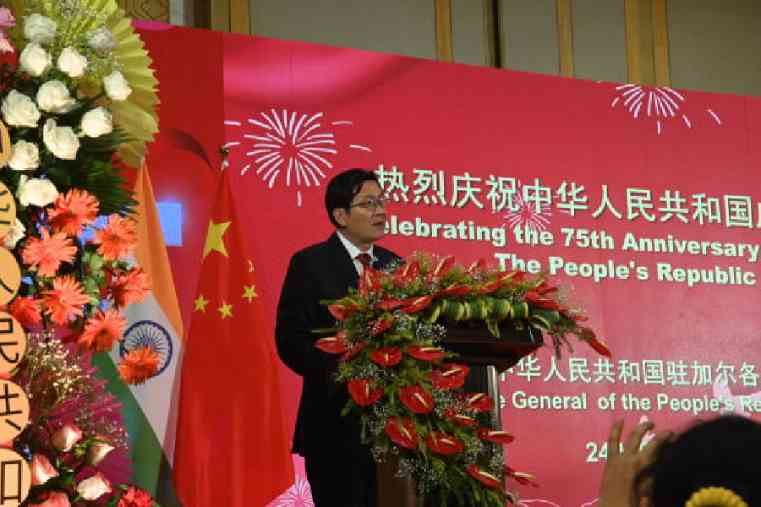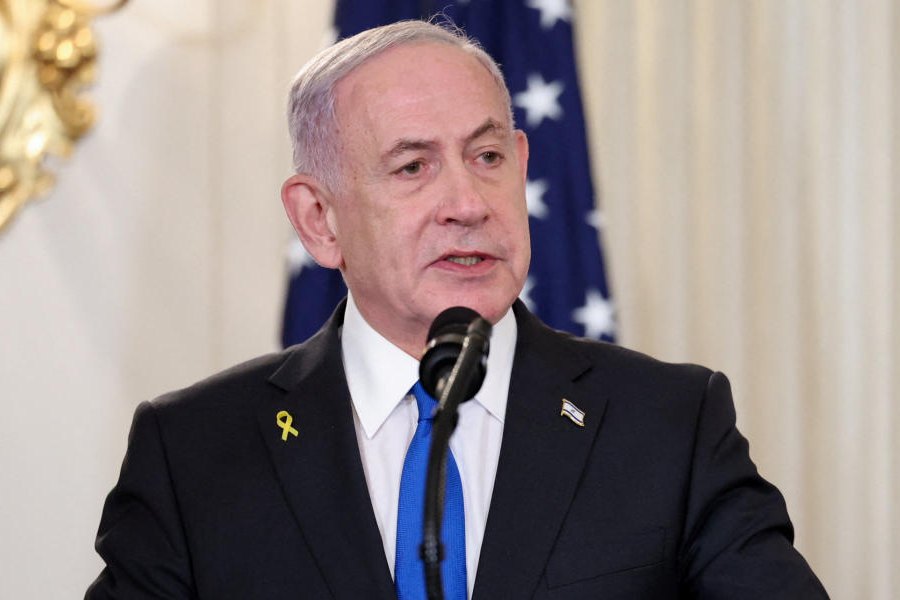When Beijing hosted the 24th Winter Olympic Games in 2022, it became the first city in the world to host both the Summer and the Winter Games. The city had hosted the Summer Games in 2008.
The National Library of China in Beijing is the largest in Asia and third largest in the world, spread over 280,000sq m, with 25 reading rooms and more than 5,000 reading seats.

Mohan Gandhi, the commerce and industry secretary, represents the state government
In 2021, the world’s first permanent magnetic levitation (maglev) train, the Xingguo, was produced in Wuhan, China.
Such trivia about our neighbouring behemoth’s achievements was for the consumption of guests invited to the National Day celebrations of China. A pictorial exhibition showcased advancements in areas like space research and communication, nuclear power and optical quantum computing.
It was the 75th anniversary of the founding of the People’s Republic of China and consul general Xu Wei spoke of the need to adhere to the Five Principles of Peaceful Coexistence (Panchsheel, the agreement signed in 1954 by the two countries) in the “new situation of the world in turmoil”. Pointing out the natural geographical advantages of eastern India, he drew attention to local attractions for Chinese tourists — (Rabindranath) Tagore, Darjeeling tea and Mahabodhi temple. He also referred to local delicacies such as phuchka, rosogolla and sorshe ilish.

A lion dance at the start of the cultural programme
The consul general emphasised on strengthening people-to-people initiatives, referring to his consulate general’s initiatives like sending a delegation of scholars and artistes from Bengal to China to mark the centenary of Tagore’s China visit, sending a cricket coach to teach the sport to the Chinese people and also delegations of local Buddhists.
“So far, the consulate general in Calcutta has issued 7,000 visas to travel, study and do business in China. We welcome more Indian friends to visit China,” he summed up.

Deputy consul general Qin Yong
It was then time for the India Hong De group to take the stage and display lion dance. A group of 21 students from St. Joan’s School presented the Chinese folk song Moli hua, dedicated to a jasmine flower. Odissi dancer Arnab Bandyopadhyay danced to Sreeja Hazra’s rendition of Wo renshi ni, renshi ni waiguo nulang. The guests recognised the tune to be Tagore’s Ami chini go chini tomare. “We had visited China as a part of a young India delegation and performed this item there as well,” said Sreeja, who teaches Chinese at St. Joan’s School and also compered the evening in Chinese alongside He Tengyuan of the consulate, who spoke in Hindi.











